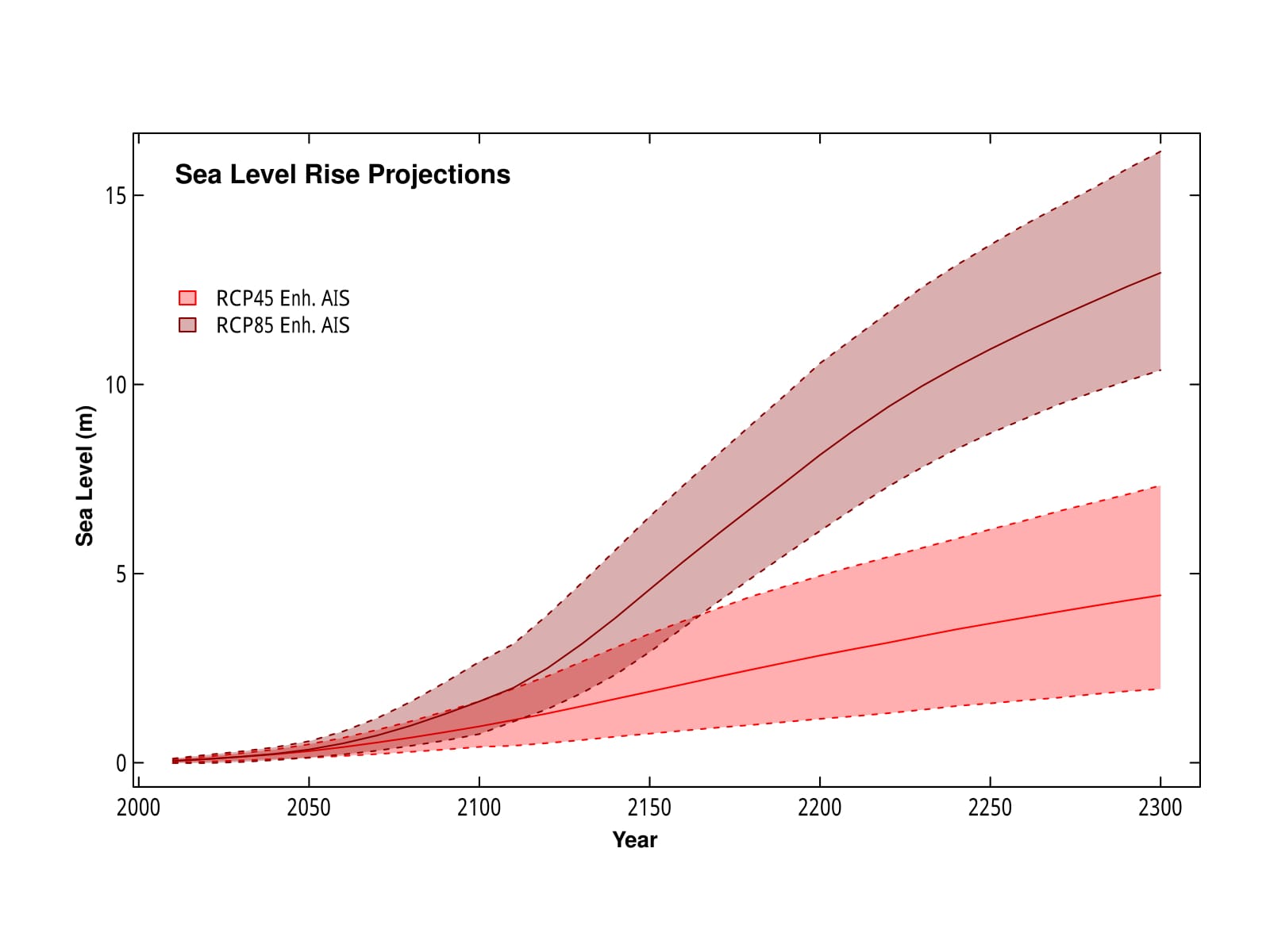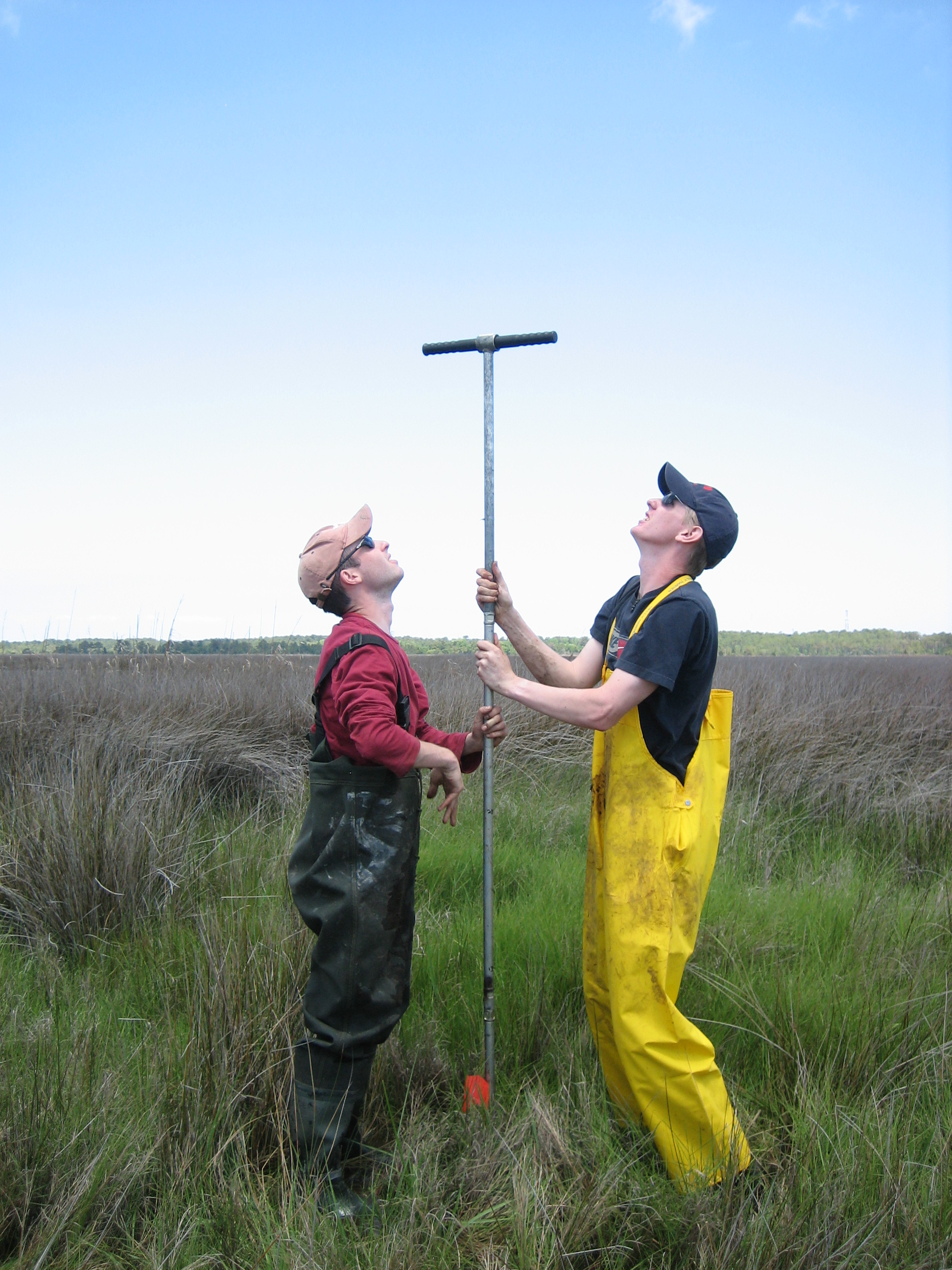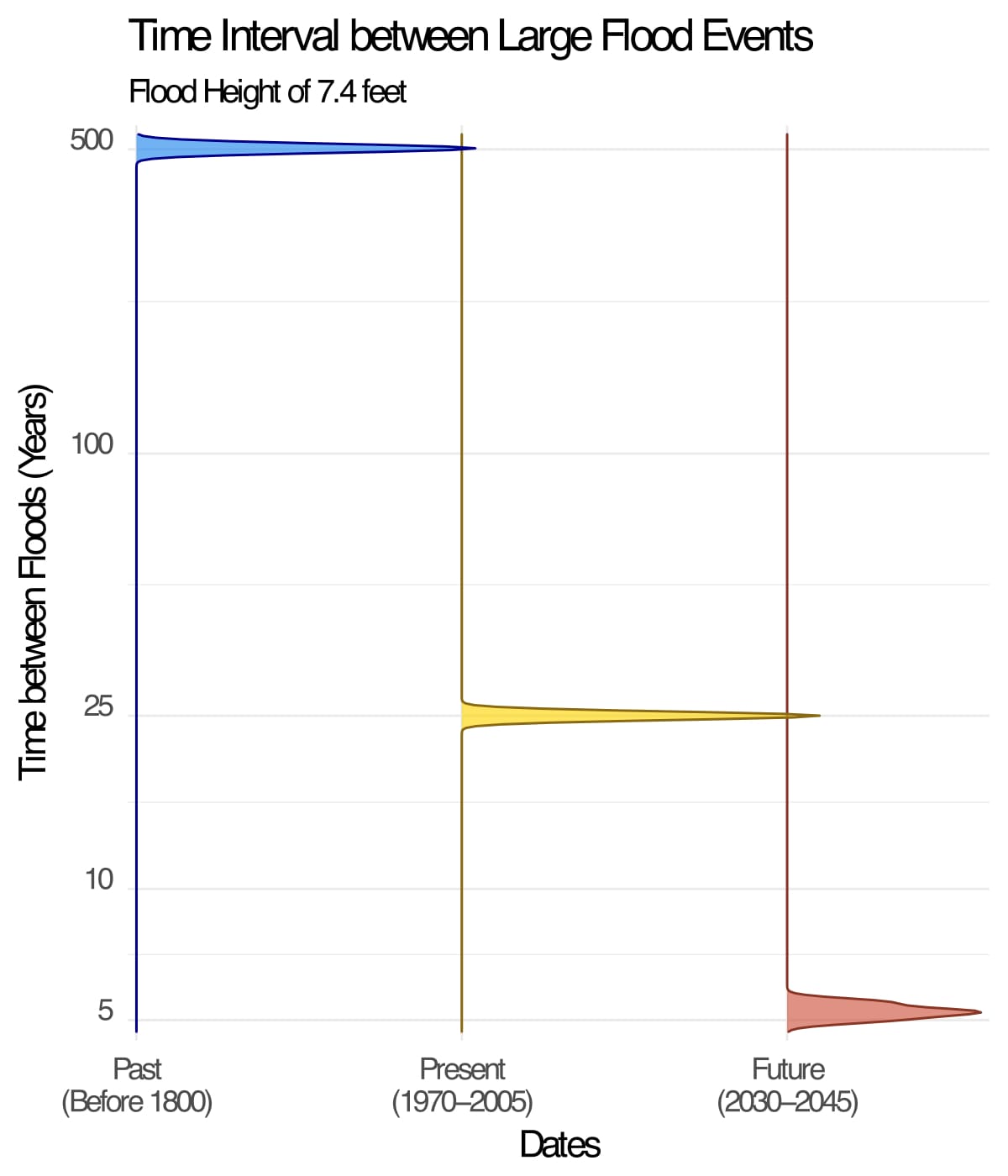Our Earth is warming. In fact, the planet’s average temperature has risen by 0.6°C over the past century, and is projected to rise another 2 to 6°C over the next hundred years. Small changes in the average temperature of the planet can translate to large and potentially dangerous shifts in climate and weather.
The evidence is clear. Rising global temperatures have been accompanied by notable changes in weather and climate. Many places have seen changes in rainfall, resulting in more floods, droughts, or intense rain, as well as more frequent and severe heat waves. The planet's oceans and glaciers have also experienced major changes – oceans are warming and becoming more acidic, ice caps are melting, and sea levels are rising.

Sea-level rise is one of the more unquestionable impacts of human-induced global warming. Given the large and growing concentration of population and economic activity in coastal regions, as well as the importance of coastal ecosystems, the potential impacts of sea-level rise have elicited widespread concern.
Unfortunately, when large storms hit land, higher sea levels mean bigger, more powerful storm surges. Higher sea levels would force people to abandon their homes and relocate. Low-lying regions could be submerged completely.

Hurricane Sandy devastated the northeastern U.S. coast in 2012, including coastal areas of New York City, killing more than 120 people and causing some $70 billion USD of property damage. In this study, we ask the question: How frequent will floods like the one produced by Sandy be in the future?
Our study, published today in Proceedings of the National Academy of Sciences (PNAS), is based on a combination of historical data and computer-generated model projections. The historical data consists of tidal gauge records taken from New York City, dating back to 1856, and geological records from the same area dating back two millennia. The model projections consist of work done on future sea-level and storm intensity models going forward to 2300.

Historically, sea-level rise was largely due to natural effects, like the slow sinking of the land in the mid-Atlantic region in response to the end of the last ice age; but over the late 20th century, human-caused climate change has become the dominant cause of sea-level rise.
The good news is that, looking into the future, the height of storm surges – the coastal flood phenomena which combined with rising sea levels and high tides to devastate parts of New York City in 2012 – may remain the same over the next 200 years. The very bad news is that flooding will nevertheless be much more frequent and severe, because sea levels will continue to rise at an accelerating rate.

Although hurricanes will likely become stronger in places with a warmer climate – much as warm ocean waters helped propel Hurricanes Harvey, Irma and Maria to the highest intensity levels – we indicate that the storm tracks will shift seaward at the latitude of New York City, minimising the increase in storm surge.
However, sea-levels are rising at alarming rates, with about 13 to 28 centimetres of sea-level rise likely in New York City between 2000 and 2030. When rising sea level is added to the storm surge height, the researchers report that a flood of 2.25 metres above sea level, which occurred once every 500 years on average before 1800, and once every 25 years on average between 1970 and 2005, could average once every five years by 2030.